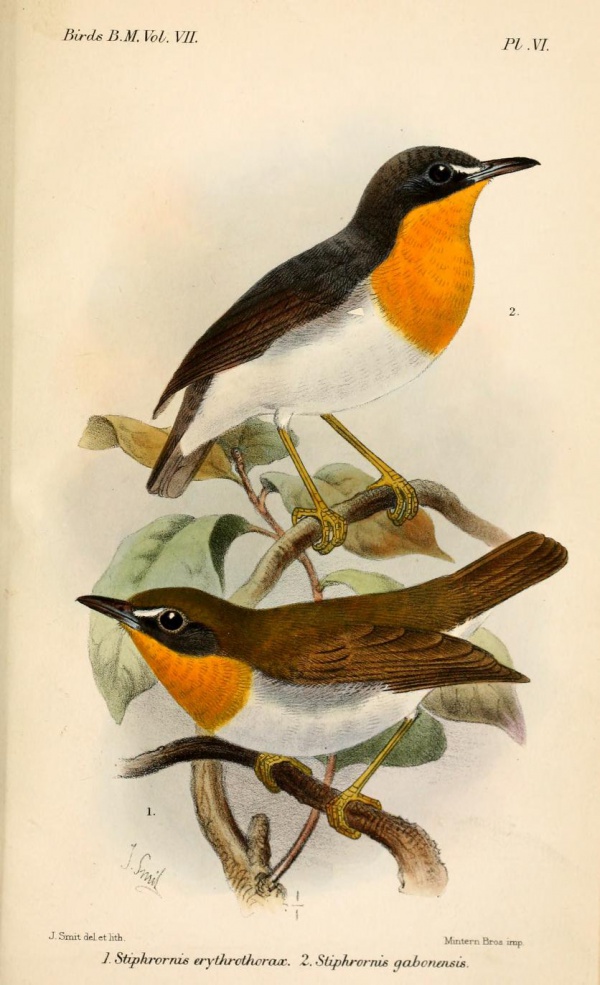Facts About Western forest robin
The Western Forest Robin is a captivating bird inhabiting the verdant forests of West Africa, spanning from Sierra Leone to Nigeria. Initially classified within the Turdidae family, it is now typically placed in the Muscicapidae family. This robin is often grouped with other birds in the Stiphrornis genus, collectively known as forest robins.
What sets the Western Forest Robin apart are its distinctive features: a vivid orange throat and breast, a white belly, and olive-colored upperparts. Its vocalizations also differ from those of other members of its genus, though further research is needed to fully comprehend these differences. The Western Forest Robin, when considered alongside its genus counterparts, is classified as "Least Concern" by the IUCN due to its prevalent and abundant presence in its natural habitat.
In 1999, the taxonomy of the Western Forest Robin underwent significant changes. Following the phylogenetic species concept, it was split into multiple species, leading to names such as S. gabonensis and S. xanthogaster, which were once subspecies of S. erythrothorax. Additionally, a new species, S. sanghensis, was introduced. However, not all ornithologists agreed with this division. Critics argued that the differences in plumage were slight, the genetic sampling was incomplete, and there was insufficient evidence of intergradation or parapatry.
Further complicating the taxonomy, another species, S. pyrrholaemus, was described in 2008. It was placed within S. erythrothorax sensu lato based on mitochondrial DNA analysis. Whether S. pyrrholaemus is a separate species or merely a subspecies of S. erythrothorax depends on the taxonomic views adopted from the 1999 revisions. The genetic disparities between S. pyrrholaemus and other genus members are comparable to those observed among other closely related species.

 Guinea
Guinea